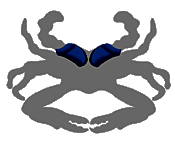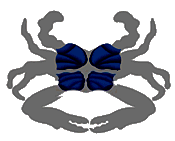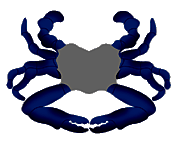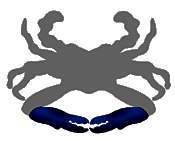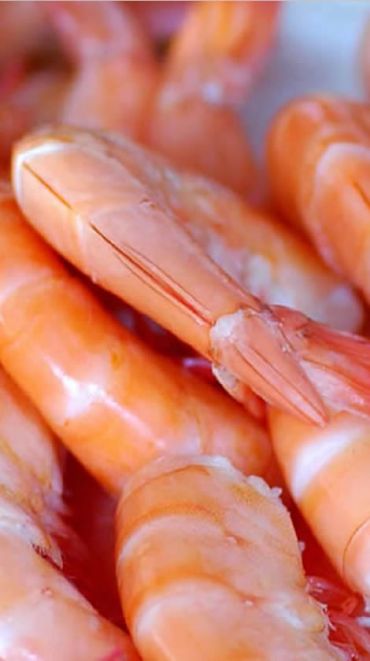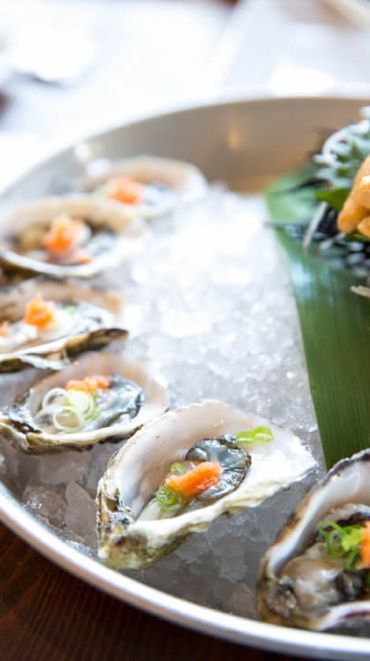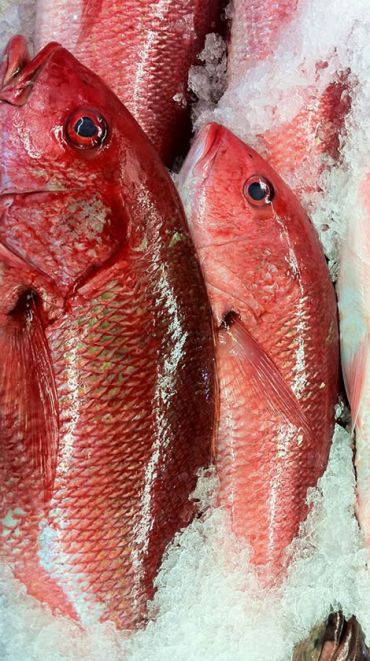Our fresh blue crab meat is domestic and comes in 1 lb containers, fully cooked and picked. It is hand-picked so it may contain some pieces of shell or cartilage; remove any that may be present before use. The season usually starts in May and goes into October, though sometimes it may not be available due to weather factors. Prices vary according to supply. The most popular dish is crab cakes.
Our crab meat comes from four different parts of the crab (see charts at right side):
Lump or jumbo lump: The largest unbroken pieces of white meat from the body; the sweetest part.
Backfin: White body meat, containing smaller and broken pieces of lump and flake meat; mild flavor.
Claw: The darker meat from the claw; stronger flavor, great for crab cakes.
Fingers or claw fingers: For cocktails or appetizers, with part of claw pincer attached.
The meat of the blue crab has a rich, sweet, succulent and buttery flavor. The body meat is delicately flavored, while claw meat is nutty. Body meat is white, tender and flaky. Claw meat has a brownish tint, which is natural. Fresh blue-crab meat has a mild aroma. It can be used in pasta dishes, gumbo, stuffing, salads, or our favorite...crab cakes!
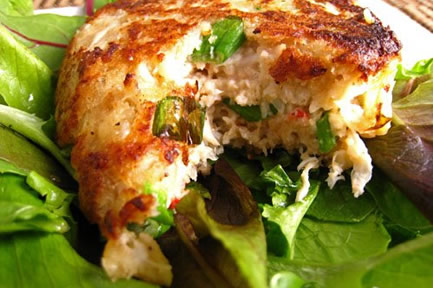 Fresh crabmeat should be stored below 35°F and has a shelf life of about 10 days from the date of packaging. You can freeze the crabmeat in the containers they come in or repack in airtight containers. Crab meat does not freeze as well as shrimp and tends to dry out after about 2 months.
Fresh crabmeat should be stored below 35°F and has a shelf life of about 10 days from the date of packaging. You can freeze the crabmeat in the containers they come in or repack in airtight containers. Crab meat does not freeze as well as shrimp and tends to dry out after about 2 months.
The blue crab is one of the most valuable crustaceans in the United States. Blue tinges on dark shells and blue patches on the legs give the crab its name.
Blue crabs average 4 to 6 inches across, with shallow, compressed bodies that taper on each end. name. Blue crabs have five pairs of legs and the first pair is equipped with pincers. They have a hard shell or exoskeleton which is brownish-green or dark green and drawn out on each side into a long spine. The underside of the body and legs are white. Male and female claws are various shades of blue on top and the tips of the females' claws are bright red.
Blue crabs are found along the Atlantic and Gulf coasts. A shallow water crab, it can live in salt, fresh and brackish waters of bays, sounds, channels and river mouths. They are omnivorous, feeding on plants and animals. During the winter months, blue crabs move into deeper water and enter a state of semi-hibernation. They are harvested by dredges, trawls, pots, trotlines and dipnets.
The process of molting allows the crab to shed its external shell periodically in order to grow. Before molting begins, a new soft-shell forms inside, and the crab backs out of the old loose shell. Soft-shell blue crabs are hard blue crabs that were captured when they were ready to molt (called peelers) and held in water-filled trays until their old shell has shed.

